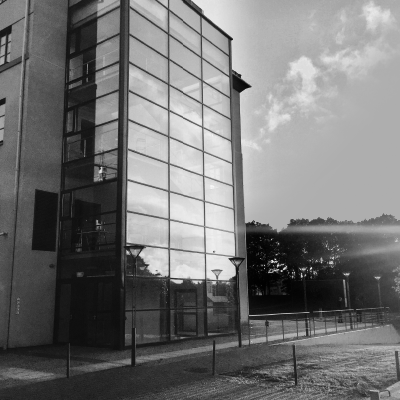blog
Aka, how to avoid agencies that vanish faster than your bounce rate after go-live.
In today’s digital-first universe, your website isn’t just a shiny brochure — it’s your storefront, sales engine, content hub, and often the very first handshake with your future customer. And yet, too many CMOs are left blinking in disbelief, saddled with bloated, underperforming websites designed by agencies that made big promises but ghosted faster than a dodgy contractor with your deposit.
This edition of Digital Leadership Insights is for every marketing leader who’s suffered from a build gone bad. Maybe you were wooed by awards and slick decks, but ended up with a site that’s slow, inflexible, or just plain ineffective. Sound familiar?
Let’s talk about what really matters when choosing a web design partner — one that’s not just in it for the build, but for your business growth.
Why This Matters More Than Ever
Your website isn’t a one-and-done launch. It’s a living, evolving digital platform — the nucleus of your marketing, sales, and brand experience.
Today, your site must:
- Reflect your brand’s tone, voice, and values
- Deliver seamless, device-agnostic user experiences
- Integrate cleanly with your tech stack — CRM, CMS, analytics, marketing automation, the lot
- Power your lead generation, SEO, paid media, and content marketing
- Be flexible and scalable enough to grow with your business (and your ambitions)
CMOs who pick the wrong partner risk months — or even years — of rework, missed targets, and broken dashboards. The right one? They’ll be an extension of your team. Strategic. Creative. And yes — accountable.

1. Strategic Alignment, Not Just Aesthetic Talent
Anyone can design a pretty homepage. The question is: will it perform? You want an agency that starts with your business goals and works backwards. That means understanding your audience, your KPIs, your customer journey — and turning all of that into an experience that works.
Look for:
- Strategic discovery sessions involving product, sales, and marketing (not just design)
- Examples of how design has driven growth or reduced friction in similar industries
- Experience working with B2B, B2C, or complex service-based models
- Agencies that talk about outcomes, not just pixels
Ask: “How will this design help us increase conversions, improve engagement, or reduce customer effort?”
2. Deep CMS Expertise (Especially Yours)
Using Umbraco, Sitecore, Contentful, or another enterprise CMS? Great. Just make sure your agency isn’t learning it on your dime.
Your partner should know your CMS inside out — including how to make it fast, secure, extensible, and easy for your team to manage content day-to-day.
Look for:
- Certified developers or official CMS partnerships
- Experience with composable or hybrid CMS models (especially relevant for enterprise scale)
- A track record of performance-optimised builds
- Knowledge of content governance, workflow management, and scalability best practices
Ask: “How do you approach content modelling and performance tuning in [your CMS]?”

3. User-Centric, Data-Informed Design
It’s 2025. If your agency isn’t testing with users, validating ideas, and iterating based on real data — they’re designing in the dark.
Great UX is built on empathy and evidence, not ego.
Look for:
- Real UX research: interviews, heatmaps, analytics, and accessibility audits
- Persona development and journey mapping
- A/B testing built into the design lifecycle
- Compliance with WCAG accessibility standards — no excuses
Ask: “How do you ensure our site is inclusive, data-led, and easy to use across all devices?”
4. Post-Launch Partnership
Go-live isn’t the end — it’s just halftime.
Your website will need tweaks, improvements, campaign rollouts, bug fixes, optimisation, SEO support… the list goes on.
Look for:
- Clear support or retainer options post-launch
- SLAs for performance issues and change requests
- A roadmap for continued UX and SEO improvements
- Evidence of long-term relationships with other clients
Ask: “What does a typical first year look like after launch?”

5. Transparent Communication and Project Management
All the tech talent in the world won’t matter if your agency disappears for three weeks, then returns with a homepage that looks nothing like the brief.
Great digital partners communicate clearly, manage timelines proactively, and make scope creep a thing of the past.
Look for:
- Dedicated project managers and regular check-ins
- Use of Agile or hybrid project methodologies
- Transparent budgets, change logs, and status updates
- Clear documentation, timelines, and stakeholder engagement
Ask: “How do you keep projects on time and on budget — especially when things change?”
Red Flags to Watch Out For
🚩 Vague proposals with no timeline, budget, or measurable outcomes
🚩 No discussion of SEO, analytics, accessibility, or performance
🚩 “We’ll sort that out later” (translation: they won’t)
🚩 No defined post-launch support or optimisation plans
🚩 Reliance on cookie-cutter templates and themes (unless that's what you need)
🚩 Radio silence or jargon-filled responses to simple questions
Pro Tip: Run a Paid Discovery Phase
Before you hand over the full brief, consider a short discovery sprint. This helps both parties validate the fit and get aligned.
You’ll walk away with:
- A strategic plan, not just assumptions
- Risk reduction (before committing budget)
- Better understanding of their thinking and approach
Think of it as dating before marriage. Less awkward. More productive.
Bonus: What CMOs Should Prepare Before Engaging an Agency
To hit the ground running, come armed with:
- A clear view of your business goals and digital KPIs
- Personas, journey maps, and key content requirements
- Brand guidelines and tone of voice docs
- An idea of the tools you’ll need to integrate (CRM, CMS, analytics)
- Decision-making roles and internal stakeholders
The clearer your brief, the better the outcome.
Final Thought
Your website isn’t a side project. It’s the digital face of your business, your marketing engine, and often your customer’s first experience of your brand.
Pick the right agency, and you’ll gain a partner who challenges assumptions, elevates your digital game, and helps you hit commercial targets. Pick the wrong one… and you’ll be back on LinkedIn reading this article again in a year.
Want a checklist version of this guide? Drop me a DM and I’ll ping it over.
Coming up next in Digital Leadership Insights: “Building a High-Performing Digital Team: In-House, Outsourced, or Hybrid?”
Until then — choose wisely. Your brand (and your sanity) will thank you.
























